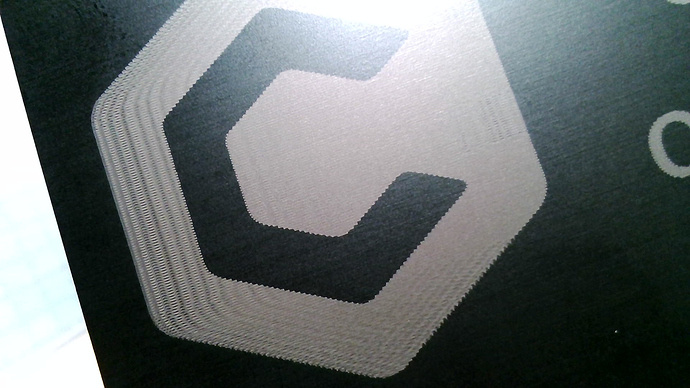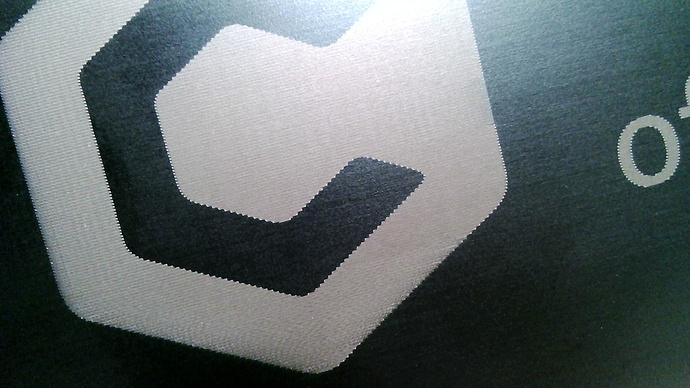Hi James,
On my side I’m pretty sure it was/is some flex/vibration in the laser mount, and now every time I have to laser small features, I reduce the accel value down to 50mm/s², and get satisfactory results (of course the machine also becomes quite slow then).
I re-discovered that conclusion a few months ago while lasering anodized aluminium:
400mm/s² accels:

50mm/s² accels:

I never bothered to investigate further WHY the laser mount vibrates, but my gut feeling is that this is a combination of the material (3D-printed plastics…not quite rigid) and attachment scheme (magnets, which are very convenient but there is not much in the bracket design to prevent tiny lateral movements of the laser on its mount). I know @neilferreri came up with a custom holder for his (non-JTech) laser that sits below the router where an endmill would normally be, it would be interesting to see if this mitigates these effects. Of course it will also be interesting to hear from other JTech users who use the stock bracket/arm, whether they also see some wiggle at high accels.